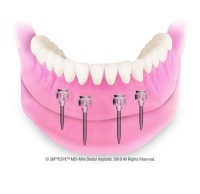General Dentist in Canton Discusses Gingivitis Causes
Gingivitis is a serious inflammation of gums. Bacterial infection is the leading cause of gingivitis. When gingivitis is left untreated, it can lead to a more serious infection which is also known as periodontitis. Gingivitis and periodontitis, when left untreated, can both lead to tooth loss. Gingivitis is easily preventable through early detection with proper and consistent oral hygiene.
What are the symptoms of gingivitis?
The following are the general signs and symptoms of gingivitis:
· Red, swollen, and tender gums that often bleed when you brush your teeth.
· Gums that have receded from your teeth
· Discoloration of the gums
· Pain when chewing
· Recurring bad breath
What causes gingivitis?
Plaque is the leading cause of gum disease (gingivitis). Plaque is a thin layer of bacteria which constantly forms on the surface of your teeth. It can be removed by daily brushing and flossing. If left untreated or removed, plaque hardens and develops into tartar.
Tartar can only be removed by professional cleaning from a dentist. Both plaque and tartar are full of bacteria. If they continue to remain in your mouth, they will extend to your gums and cause gingivitis.
With poor oral hygiene, the risk of gingivitis increases. Other risk factors that increase the likelihood of developing gingivitis include:
· Smoking or chewing tobacco
· Crooked and overlapping teeth
· Hormonal changes
· Cancer
· Alcohol
· Stress
· Mouth breathing
· Diabetes
· Certain medications
What treatment options are available for gingivitis?
1. Professional dental cleaning
· Scaling - a process in which tartar is removed from above and below the gum line
· Root planing - a process which smoothens rough spots and removes infected portion of your teeth
· Lasers - this can remove tartar with less pain and bleeding than the previous options
2. Medication
· Antibiotic mouthwash with chlorhexidine
· Antiseptic chips containing chlorhexidine and antibiotic microspheres can be inserted into gum pockets after scaling and root planing
· Oral antibiotics
3. Surgery
· Flap surgery - a procedure where the gums are moved back to remove the plaque. The gums are sutured back in place after the procedure to eliminate gaps.
· Bone and tissue grafts - this option is used when the teeth and jaw are too damaged to heal










